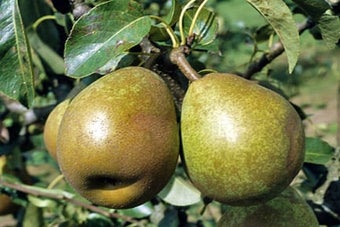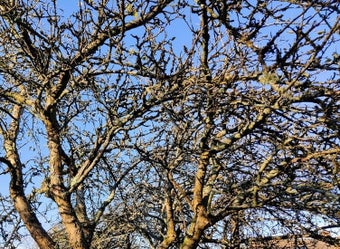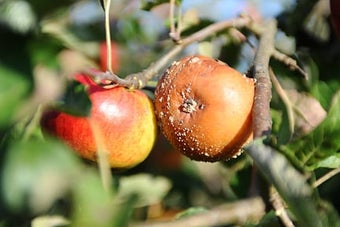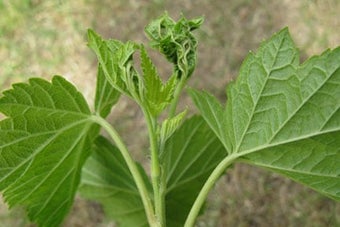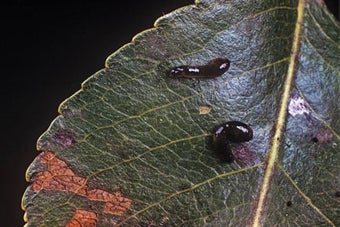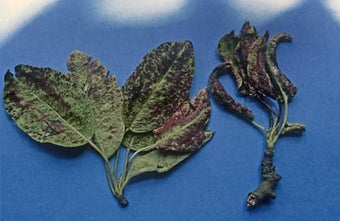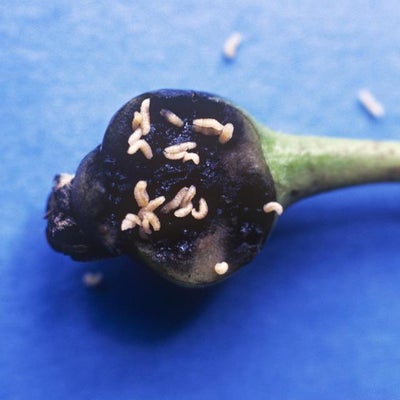
Quick facts
Common name - Pear midge
Scientific name - Contarinia pyrivora
Plants affected - Pear
Main symptoms - Pear fruitlets go black and drop off in June. Small maggots may be found inside the fruitlets
Caused by - Larvae of a gall midge
Timing - May-June
What is pear midge?
Pear midge is a small fly with larvae that develop inside pear fruitlets, causing them to turn black and drop off the tree in early summer.
Gall midges are a family of flies, the Cecidomyidae, there are more than 600 species found in Britain. As adults most are small brown or black flies, they do not bite. As the name suggests many species feed as larvae within plant tissues causing galling and distortion. Some are however, predatory on aphids and mites whilst others feed on rust fungi.
Symptoms
- Pear with pear midge will turn black and fall from the tree
- Affected pear fruitlets initially grow faster and are softer than healthy fruitlets but during May they begin to turn black at the eye end of the fruit (opposite end to the stalk)
- The black colour spreads up the fruitlet and it drops off in June
- A high proportion of the potential crop can be lost
- Inside the damaged fruitlets are many orange white maggots, up to 4 mm in length

Management
Monitor pear fruit development for midge damage throughout spring.
- Severity of damage varies from year to year, in some years very few pears will be affected in others a majority of the crop can be lost. It may be possible to tolerate some crop losses
- Look for affected and remove them before the larvae complete their feeding and enter the soil to pupate
- Encourage predators and other natural enemies in the garden such as birds, spiders and ground beetles
- The midge larvae enter the soil when fully grown, where possible the soil around the base of the tree during dry weather in June and July, may reduce survival of the pupae
Biology
The adult flies are tiny midges that emerge in spring, when the females lay eggs in pear blossom shortly before it opens.
The larvae feed inside the developing fruitlets, reducing the centre to a blackish brown mush. The larvae are fully fed by late May-June, when the damaged drop off.
The larvae enter the soil where they overwinter inside silk cocoons before pupating in the spring.


